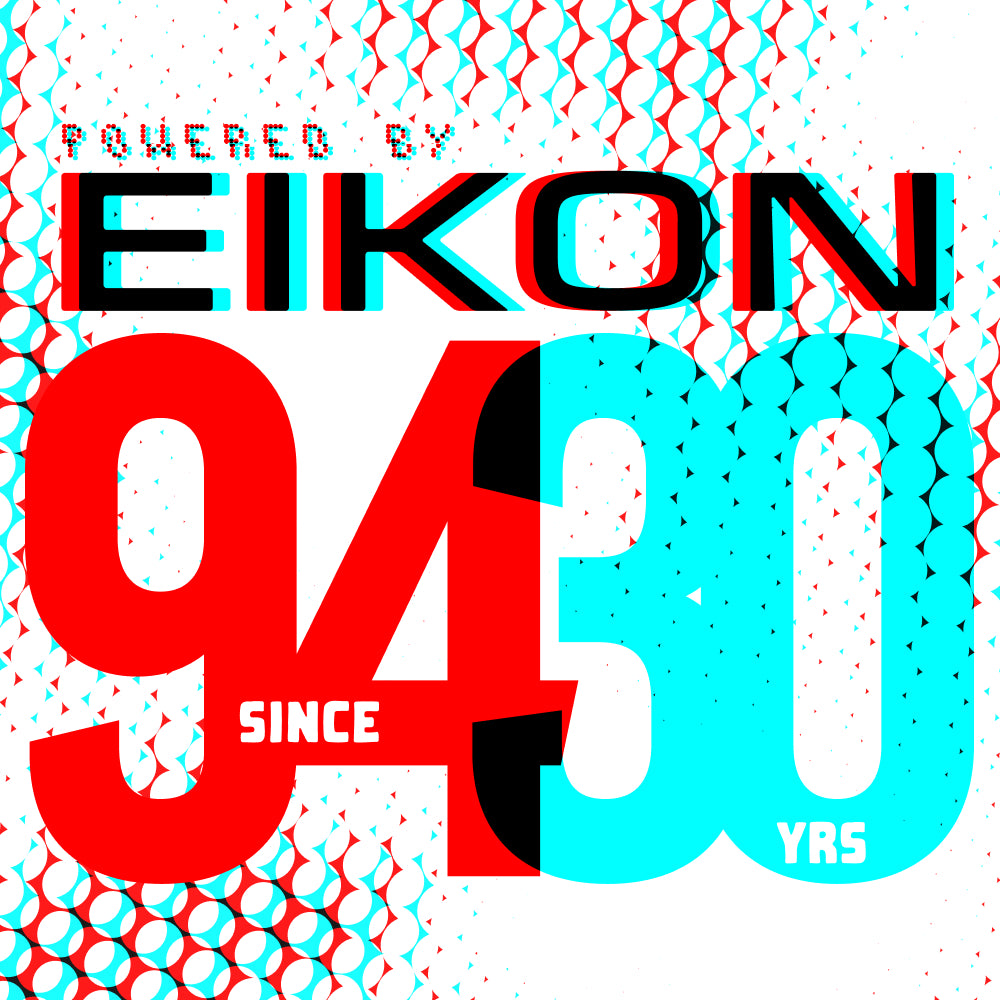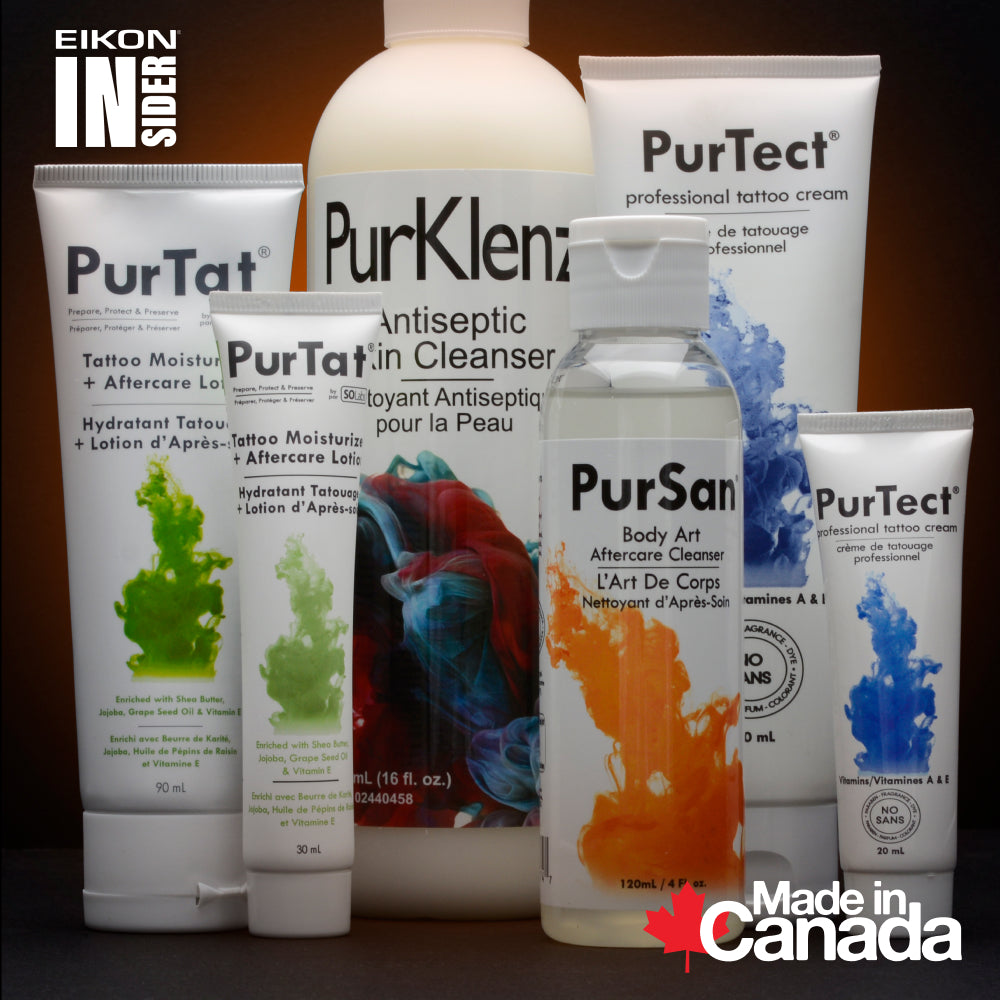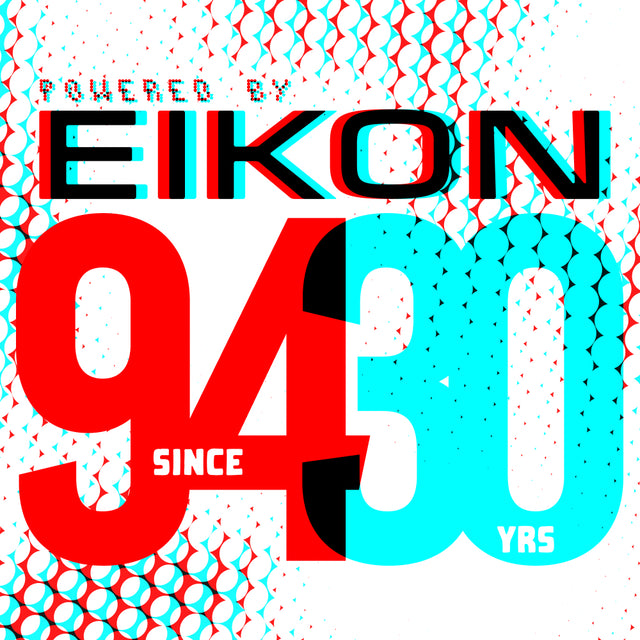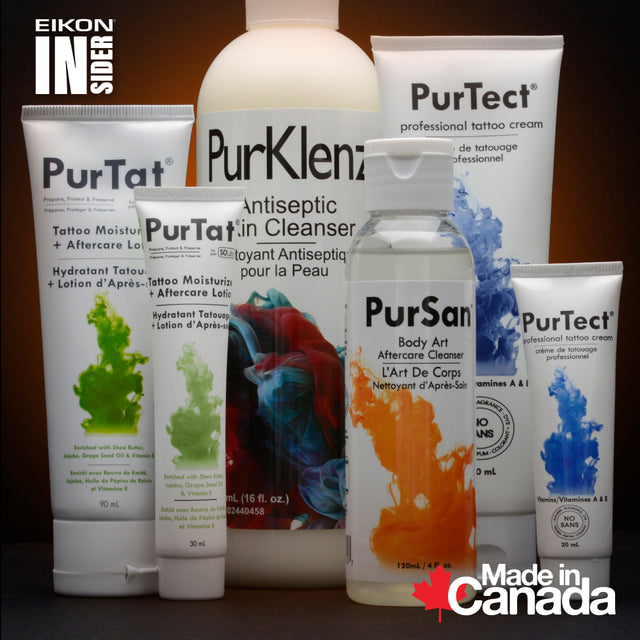Bob Paulin talks Point to Point
Bob Paulin, caretaker of tattoo history, an old-timer who learned early on how to stay up to par, has stories for even “older-timers”. You could easily get lost down the rabbit-hole when you're lurking in his vintage collections" - Patrick Coste

@PatrickCoste: Thanks very much for taking the time to chat with me Bob. I know you're an avid collector and I read EVERYTHING you post on @vintagetattoocanada, so I’ve had you in mind for P2P for a long time. I have to admit, I need to find a way to get people more interested in the old stories! This is our last interview of the season and I wanted to finish with something special, you know, you may perhaps be less glamorous than others, but you’ve lived quite a life of tattooing!
Like many, you had to stop tattooing for a few months but now you’re back at it. Although you’ve been tattooing for 30 years, you’re not the most known tattoo artist. You've been on my social feed for so long, but we’ve never really met right? It feels like I know you though...
@BobPaulin: I saw you at a few conventions for sure, but we’ve never really officially met, no. I used to do the conventions, like a lot, almost everything. I did the first organized tattoo conventions like the ‘’MJM’’, the American Jamboree Tattoo Convention in Schenectady, New York, in the early 90s, like 92. I got to meet a lot of great tattoo artists like Big Joe Kaplan, Spider Webb, Jack Rudy, working around with these guys and watching them work.
Then the Canadian ones; the first Toronto Tattoo Convention, Montreal... I even started popping up at the conventions and always went to the Eikon booth to buy stuff. Back then you guys tried to make your presence known.

At that time, the magazines were the thing, no internet back then. So in order to get magazine coverage, you had to be at the convention so that photographers could see you and see your clients, right? So that worked pretty well. That was the medium before the internet, you know? If you wanted to be known, you had to be in the magazine, so I tried to get into as many magazines as possible and in the process started getting my stuff, my work, right next to some other famous tattoo artists like Marshall Bennett, and a lot of black and grey artists that I really enjoyed. I started getting my work in the magazines for them. It was easier to approach these guys at the convention and talk to them.
PC: What was young Bob like? When you started in ‘92, were you an early bloomer in tattooing?
BP: No, I wasn't. I was in my mid 20’s... I actually was a cabinet maker and I was building café racer motorcycles, you know, the two-stroke motorcycles. I really like the 70s motorcycles. My customers kept seeing my art because I've always been an artist, and they kept asking me to draw tattoos designed for them.

That's when I met Dave Price and he said, “I'm tattooing all your drawings of your work, you should be tattooing. Why aren't you doing this?” He actually sort of talked me into it, you know?
In the late 80s, early 90s, there were so many Daves around here... There was a Big Dave, a Little Dave, there was Dave “Ace” Daniels... Then a WAY COOL Tattoo shop opened and at that time the whole industry changed. I think there were five Way Cool Tattoos in the early 90s, from Niagara Falls to Toronto.
So Dave, that wild character, he knew everyone, he went everywhere... He took his crew to England. He would take twenty people up and make gatherings and all.
He was also a collector. He had a massive collection of all sorts. He had shrunken heads, he had a museum, he collected very old stuff.
You know me, I really liked the 90s because that was my history and I really liked that era from 89 to 99.
It’s true it was an era of bikers. To me, it was very cool, you know? Like, everybody had the choppers and motorcycles and my generation was the first one that was artists, and not just bikers or sailors.
My dad was a car guy and he built hot rods, and when I was a kid there were always cars, from ‘32 Fords up to ‘57 Chevys, you know? I didn't have that kind of money. I didn't have a garage, so I started building bikes in my basement. Smaller.
I really liked the café racer sort of bikes, so I started building Japanese bikes and British bikes. The bikers didn’t care about that. They didn't care about that at all, so they left me alone with this and it was a little easier, you know, to make that transition.

The industry was changing anyway, you know, like, I was the first one of my generation to use a real name. Before this, tattooers used nicknames... The tattoo artists in the area had names like; Butch Bear, Painless Pappy, The Kid... Oh my God. Yeah, you know, these were the guys that were tattooing in Niagara and none of them had real names, so if you had a problem you couldn't find them. They could disappear or go and move to another city and start again. These guys were making fun of me because I was using gloves...
PC: Yeah. Yeah, that sounds like about the same time New York banned Tattooing...late 80s, early 90s...
BP: Exactly, and these guys... I would go visit their shop and try to introduce myself and they’d say, “Let me see your hands” and they're like, “You're not a tattooer, look, your nails are clean”. They’d laugh with me and they’d call the other tattoo artists, “Come on. Look at this guy who says he's a tattoo artist.”
It was tough, and then there was a guy down the street from the Painless Pappy tattoo shop. He was right across from the hospital, and the tip of his tongue was all tattooed in different colours because when the ink would clog on the tip of this tattoo machine, he would lick it and poke his tongue. Sometimes by accident, out of habit, he’d touch the foot pedal and zap his tongue, lol!
He told me some excellent stories... They didn't have ink caps back then, so they would use beer caps because the beer was sterile because it had alcohol, lol. If you wanted five colours he would have to open five beers and then you'd have to drink them with him... Then sometimes you’d get drunk enough, that at the end he would tell you that you forgot to pay, and he’d get double pay.
PC: Lolololol...
BP: You know, you're a kid. You're 18-19 years old. You're maybe having more beers than you normally would, with someone you're afraid of... Then he asks you to pay him, but he’d already been paid… He even told me that a guy he learned from used to get triple pay out of some drunken sailors. He’d get them to pay first, then he’d get them drunk and ask them to pay again because he was getting great, and then they’d leave and he’d chase them down the street and get them to pay again. Such as it was, we're talking only $5, $10, so it was a little easier to get this, you know? These kids were so intimidated by these bikers that they’d just do it.
PC: So was Dave your mentor?
BP: I started there, yes, and then Dave had just gotten clean and sober. My brother passed and I got sober at the same time, and I met Dave at a fundraiser for the Fifth Chapter motorcycle club. It was like a dance to raise money for this group of sober bikers, but he didn't give me a true apprenticeship. He just gave me some pointers like, using this needle, that ink... He had me build a homemade machine and do a couple tattoos. He had British bikes, so we would exchange and spend time doing stuff.
I never really got into machine building... I made stainless tubes, you know? Tattooing metal tubes, old tubes. I built a lot of tubes…
At the time, guys weren't even sterilizing their equipment. They were just using the dry heat, like toaster ovens or chemicals, to clean tubes and needles. I thought I should have twenty-five tubes, instead of using five tubes over and over and having to clean them all the time, so I started making them. At the time, a single needle was about $5. It was very expensive at the beginning and tubes were $30 - $40, which was a lot when you're getting $30 for a tattoo.

I also really enjoyed making needles. For the first 15 years of my career, every single tattoo, I made the needles
PC: Craziness! Those were the 90s... Keep going, tell me more about your story!
BP: I opened a shop pretty soon after, in downtown St. Catharines, in ‘99. I've had nine guys working for me sometimes, and most of the shops around now are owned by former apprentices or people that I started. So amazing! Almost all the shops around in Niagara actually got their start with me.
PC: That's a good legacy, right there... Yeah.
BP: It's fun. Everybody’s humble because I have all their first flash, and I have all their first tattoos. I usually let my apprentices tattoo me first, you know? Like sacrificing skin before I turn them loose in the wild..
PC: 100%
BP: It was also the time when I was doing a lot of tattoo flash sets, and going on the road and selling them. By 2000, I had five sets of flash and I was selling my designs all over Canada, the United States, and at all the conventions. So it's really fun, because sometimes I'll go to Florida and see my flash on the wall at a tattoo shop in Florida, you know? All that paid very well, like, five sheets of flash was $100. I could print them for $1 or $2, then it would pay for our road trip. We’d travel all around, and that's pre-internet as well. So you had those flash, to buy to get acquainted with whatever you wanted to do.
Some of the artists would buy it without even seeing it. They're just, “Oh, you're on a road trip selling flash? Yeah, I'll take it”. I'm like, “Do you want to see it?” They're like, “Nope, here's 100 bucks”. They’d just take it and it paid my way around, and that's one of the ways that a lot of tattoo artists travelled around, you know, to pay their way.
PC: Priceless. I have to admit, I’m that way with t-shirts. My wardrobe has been thin for the last two years… Lol!
BP: I’ve got boxes of T-shirts, and I was skinny back then so none of them fit me very well. Today, I'm wearing my tattoo artist shirt from Studio One that I got in 1989, and then my God, finally grew big enough to wear it!
PC: I remember you sending me a picture of the Eikon brochures from way back when… When I first started working with Eikon...

BP: YES, it was a picture of their catalogue collection...
PC: One thing I want to tap into before we go is that you're an old-timer, if I may say so, in the matter of tattooing. Unlike some, you’ve updated your skills in the art of tattooing, and well... You kill it everyday! What would you say has helped you to stay sharp?
BP: I think early on the competition was very fierce, you know? Like, once somebody started doing something, everybody started doing it. Going to the conventions, it was really easy for me to go and watch these innovators in person.
I remember at the ‘93 Montreal Convention I went and watched Tintin work. I stood at his booth for six hours and watched him for six hours, and he let me... And he's like, come here, stand closer. Then I went to Amsterdam to watch Jack Rudy work and I stood beside him for four hours and watched him work closely, and he let me, you know? But you had to be respectful and you had to first introduce yourself, show your respect, show that you actually knew who they were and that you weren't just there to steal their technique. Once you showed that respect, they’d let you sit and watch all of them if you wanted.
I watched Mike Austin work in Montreal early on… He blew my mind with his skill, his early shading was so perfect. His lining was so perfect. He was only an hour’s drive from me, you know? But I had to drive nine hours to see him work because I couldn't go to a shop, and he wasn't tattooing tattoo artists. He knew that they were stealing his techniques, but if you bought a shirt and paid some respect, you could watch him work a little bit at the convention, and it was easy to pick up tricks and tips... You could see what brand of ink they were using, because it was right there.
PC: Yeah, I remember apparently people hid their stuff too... Like, cheap bottles so others wouldn’t see which products they were using... No brands anywhere.. But then, there wasn’t much back then either. Amazing.
BP: That's how you kept it, you know? That was in the early days, but let's say you use that for the next twenty years. Then let's say, the “2000” years arrived and that's when artists started to tour a bit more, you know? Like Fine Art, people became better and better, so you try to match the talent of those people in your style. For me it was black and grey illustrations. Like, I draw and I draw a lot…
When I'm not working, it's something I can do, that I can stand up and do. So at night, I come home and I stand and paint or I have a tall desk and I draw, for me. I still have my own art and still do cabinet making, and I think when art is your whole life you grow with it. And you know, I changed over the years. I knew what I liked, I knew what I wanted in my life.

I think some people… I think they do too much. They try and do too many different things and then they don't specialize, or don't become skilled in one thing, you know? I try to keep my focus on art and what I love.
PC: Thank you so much Bob, what’s next for you Sir?
BP: I just finished a children's book and it's gonna go to press in the next few weeks. I was afraid of needles when I was a child, and ironically my dad was too, so I wrote a book about needle pain for children. It's about a character who has to get a needle and he's afraid and he goes to his father who has a tattoo, and asks him about how much it hurts to get a needle.
PC: This is fantastic Bob! Thank you so much for sharing.. Can’t wait to see this. Please send a copy to the shop when you’re ready!
BP: Will certainly do!!! Thank you Patrick
To see more of Bob Paulin, visit @vintagetattoocanada - @bobpaulin























